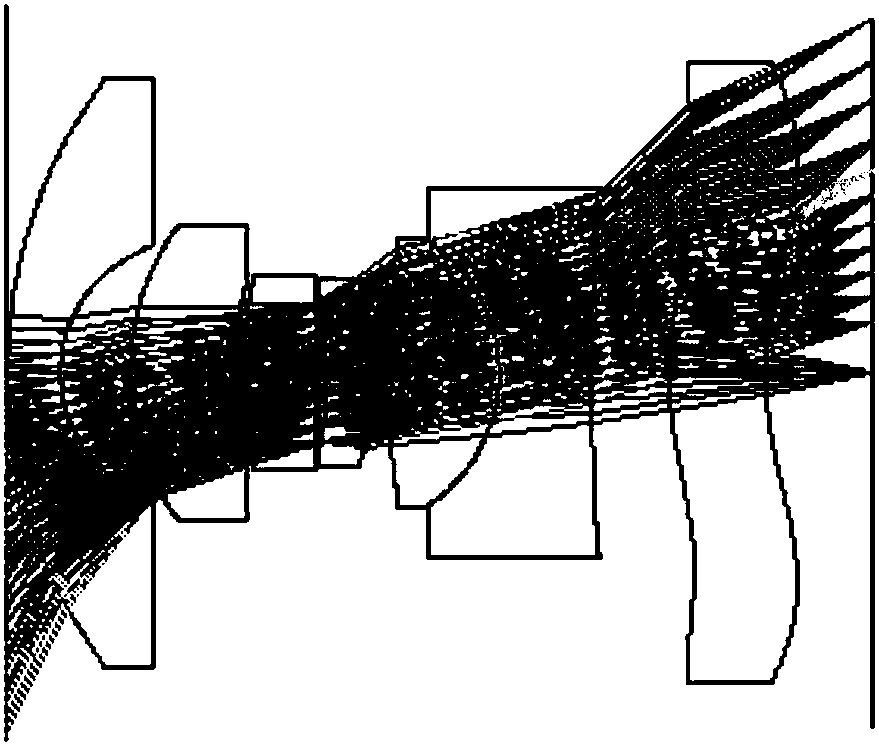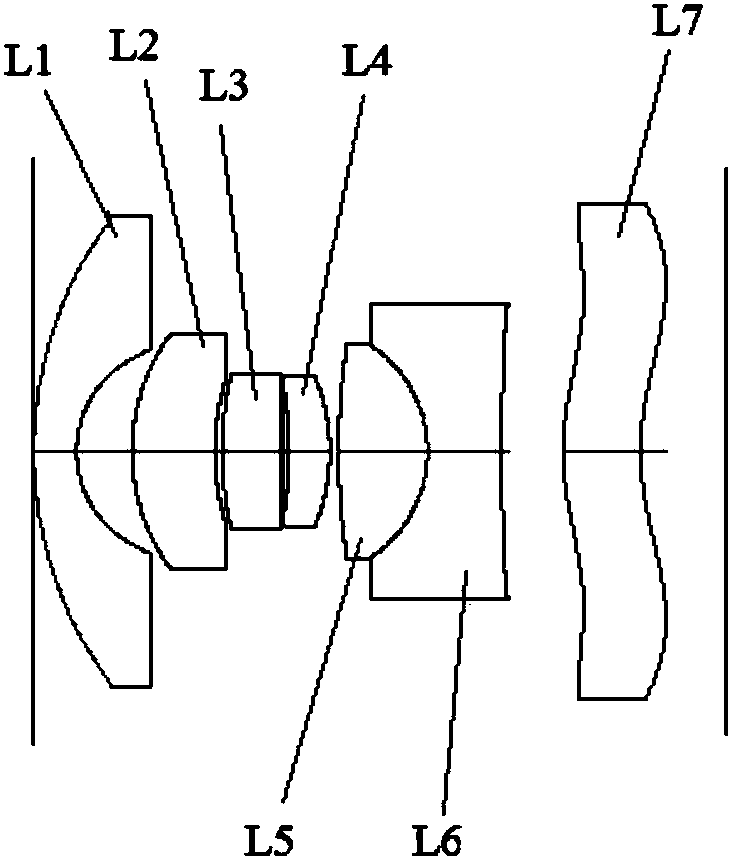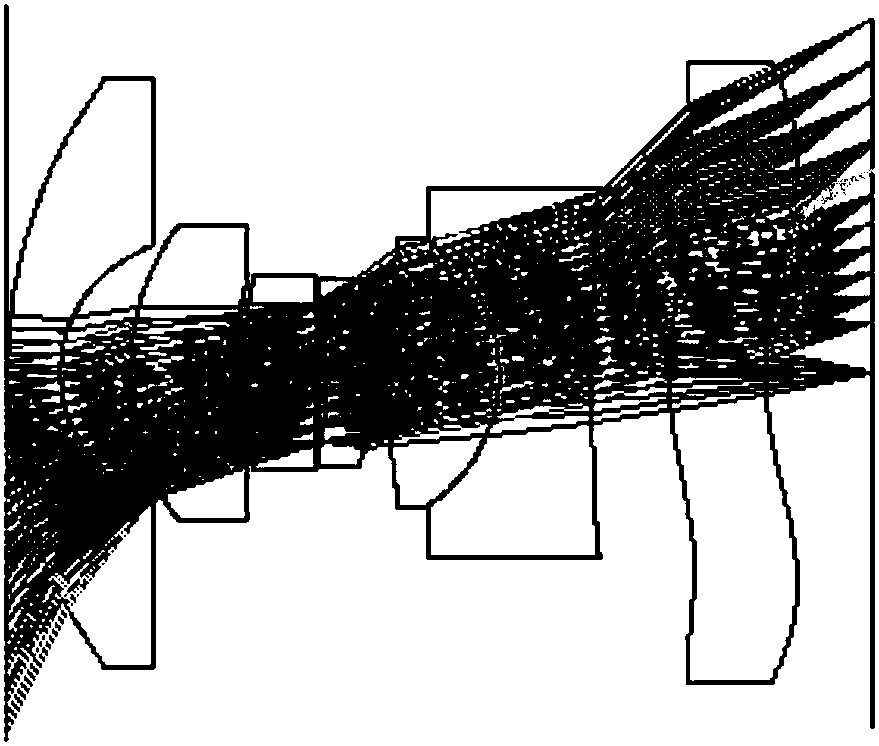a wide-angle lens
A wide-angle lens and lens technology, applied in the field of optical lenses, can solve the problems of not being able to meet the strict requirements of CRA, high cost, complex structure, etc., and achieve the effects of good chromatic aberration, field curvature correction, and small lateral chromatic aberration
- Summary
- Abstract
- Description
- Claims
- Application Information
AI Technical Summary
Problems solved by technology
Method used
Image
Examples
Embodiment 1
[0023] figure 1 It is a structural principle diagram of a wide-angle lens according to an embodiment of the present invention, figure 2 It is a structural schematic diagram of a wide-angle lens according to an embodiment of the present invention, see figure 1 with figure 2 , the wide-angle lens includes: the first lens L1, the second lens L2, the third lens L3, the diaphragm L0, the fourth lens L4, the fifth lens L5, the sixth lens L6 and the seventh lens L7 arranged in sequence along the light incident direction ;
[0024] The first lens L1 is a spherical negative lens with both surfaces convex toward the object side;
[0025] The second lens L2 is a spherical positive lens with both surfaces convex toward the object side;
[0026] The third lens L3 is a spherical positive lens with both surfaces convex toward the object side;
[0027] The fourth lens L4 is a spherical positive lens with both surfaces convex toward the image side;
[0028] The fifth lens L5 and the si...
Embodiment 2
[0032] In this embodiment, the explanation is focused on the relational expressions satisfied by the refractive index Nd and the Abbe number Vd of each lens of the wide-angle lens. For other contents, refer to other embodiments of the present invention. In the wide-angle lens of the present invention, the refractive index Nd and the Abbe number Vd of each lens respectively satisfy the following relational expressions.
[0033] The refractive index Nd1 and the Abbe number Vd1 of the first lens L1 satisfy the following relational expressions respectively:
[0034] 1.5
[0035] The refractive index Nd2 and the Abbe number Vd2 of the second lens L2 satisfy the following relational expressions respectively:
[0036] 1.64
[0037] The refractive index Nd3 and the Abbe number Vd3 of the third lens L3 satisfy the following relational expressions respectively:
[0038] 1.6
[0039] The refractive index Nd4 and the Abbe nu...
Embodiment 3
[0050] In this embodiment, the description focuses on the surface shapes of the two surfaces of the sixth lens L6 of the wide-angle lens. For other content, refer to other embodiments of the present invention. In the wide-angle lens of the present invention, the surface of the sixth lens L6 close to the seventh lens L7 is spherical.
[0051]In this way, in the wide-angle lens system of the present invention, only the two surfaces of the seventh lens L7 are aspherical, and the CRA of any field of view can be strictly controlled within a certain range, and the tolerance range is ±0.2°, for example, θ is the maximum For the CRA of the field of view, when the full field of view is 29.8°, through the last aspherical surface, that is, the surface of the seventh lens L7 close to the image side, the CRA can be precisely controlled within the range of 29.8±3° without affecting the MTF (modulation transfer function), and it can also increase the MTF value by controlling field curvature....
PUM
 Login to View More
Login to View More Abstract
Description
Claims
Application Information
 Login to View More
Login to View More - Generate Ideas
- Intellectual Property
- Life Sciences
- Materials
- Tech Scout
- Unparalleled Data Quality
- Higher Quality Content
- 60% Fewer Hallucinations
Browse by: Latest US Patents, China's latest patents, Technical Efficacy Thesaurus, Application Domain, Technology Topic, Popular Technical Reports.
© 2025 PatSnap. All rights reserved.Legal|Privacy policy|Modern Slavery Act Transparency Statement|Sitemap|About US| Contact US: help@patsnap.com



